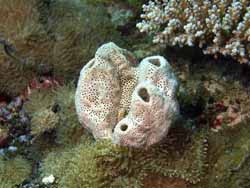Barcodes for Portugal's water species
DNA barcoding is used to identify living species, and can thus be used as an environmental monitoring tool or to expand biodiversity inventories. The EU-funded LUSOAQUABARCODE project implemented DNA barcoding for marine and freshwater macrobenthic communities (certain small marine species, including sponges and crustaceans) in Portugal. The project drew on expertise from several local universities, research institutes, Lisbon's National Museum of Natural History and other international partners to create the libraries. Over 300 marine invertebrates and more than 150 fish species, including most exploited species, have been recorded. Other data such as coordinates and images of the specimens form part of the library entries, available online in the Barcode of Life Data Systems(opens in new window). As part of the cataloguing process, researchers improved on some of the technical aspects of DNA barcoding. They also introduced a ranking system that provides an empirical way to judge the reliability of species identification when using the reference DNA barcodes. The new libraries will be useful for identifying fish and shellfish in markets and fisheries. They will also enable environmental monitoring in estuarine macrobenthic communities, in line with the EU Water Framework Directive.







